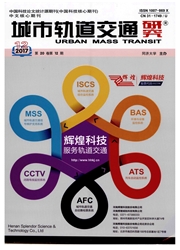

 中文摘要:
中文摘要:
以上海市为研究背景,采取实证分析与理论推导相结合的方法,探讨如何利用建设轨道交通的机遇,引导大城市空间结构和郊区城镇的合理发展.对上海市现有的城区外围轨道交通站点地区进行实地调研,阐释轨道交通对于城市外围地区土地利用模式的影响.通过分析莘庄镇在轨道交通建设前后的发展变迁历程,剖析轨道交通对于郊区城镇的社会经济、城镇建设的影响.通过总结现有轨道交通站点地区的发展经验,阐述轨道交通对于郊区节点城镇发展建设的影响机制.轨道交通对于设有轨道交通站点的中心镇建设发展的影响主要体现在城镇职能与产业发展、城市化水平、周地布局结构等方面.
 英文摘要:
英文摘要:
Taking Shanghai as an example for the purpose to explore the urban spatial structure in a metropolitan and the rational development of its suburbs, by exploiting the opportunity of rapid rail transit construction, this paper chiefly adopts an integrated method of analytic demonstration and theoretical reasoning,and conducts the research as following: first, a spot investigation about the rail station areas on the outer circle of Shanghai is carried out, the influence of the rail transit on the land-using mode along the outer circle is studied; then, the development and changes of Xinzhuang Town before and after the oonstruction of rall transit is analyzed, the influence of rall transit on the social economy, the town oonstruction and the suburban development is anatomized; finally, through a summary of the experiences obtained in the rail station region development, the mechanism of the rall transit influence on the node town (a central town with a rail transit station) construction in the suburban area is elaborated. The authors assert that the influence of rail transit on the development and construction of node towns mainly embodies in the function changes, the industry development, the urbanization level, the layout and spatial structure of the town. Now, Chinese cities are in a crucial period of urban space and structure adjustment, we must make full use of the opportunity brought about by the oonstruction of urban rail transit, and develop a spatial structure of urban area that will oontribute to the harmony with rail transit system and benefit the sustainable development of the metropolitan area.
 同期刊论文项目
同期刊论文项目
 同项目期刊论文
同项目期刊论文
 期刊信息
期刊信息
